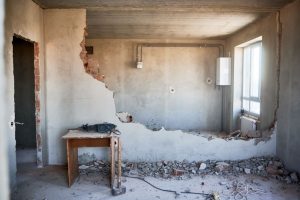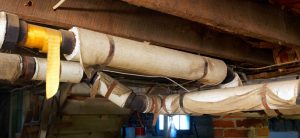Asbestos was widely used as a fire-resistant material from the 1930s to the 1970s. Old buildings may contain this cancer-causing substance, commonly found in insulation, ceiling tiles, roofing shingles, vinyl floors, and siding.
However, some other items could contain asbestos that you might not be aware of. If you have a structure built in the 1970s or before, you might keep an eye out for these items.
Related Post: 7 Questions to Ask a Company About Asbestos Abatement in Cincinnati Before Hiring One
Old Blinds and Drapes
Heavy blinds and drapes in old buildings were designed to resist fires. Think gigantic office buildings where corporate functions took place, hotels where guests spent the night, and multi-level retail centers.
The reason the blinds and drapes were so heavy was that they had many layers. One of those layers may have had asbestos fibers woven into the fabric. They also served to dampen noises, which were prevalent in large cities. The same fireproof pads in the blinds were also used as a way to cover heating elements on a stovetop to prevent the spread of fires.
Vintage Hairdryers
If your property was an old hotel, you might see a closet full of vintage hairdryers. Although there are a lot of antique items that some flea markets might like to have on hand, vintage hairdryers might not be one of them.
To insulate the device from the heating elements, manufacturers put asbestos between the outer casing and the heating element. These should be disposed of properly if you find them.
Look out for vintage refrigerators, toasters, and electrical panels, too.
Old Boilers & Furnaces
You’ve probably watched the scene in Home Alone where young Kevin McCallister hears strange noises from the basement, and it looks like the furnace is alive and out to terrorize him.
The movie is partially correct.
Old furnaces and boilers may have asbestos in them, and you’d be surprised how common they are in old buildings. For some buildings that haven’t been renovated in years, those old appliances might still be in operation. You should get rid of old boilers and furnaces as soon as possible to reduce the asbestos in your building.
Fire Doors
Fire doors were heavy for a reason. They needed to be thick to prevent the spread of fire in a large building, such as along stairways or into vast cargo areas. Many older buildings incorporated asbestos into these doors as a fire-resistant material.
Gaskets
Gaskets were a big part of construction, shipbuilding, manufacturing, and boiler making. Asbestos fibers were incorporated into gaskets so that when they were sealed, they would resist fires. You might still see asbestos gaskets in older equipment and vehicles on your property.
Gaskets with asbestos will appear as if they have threads or fibers. They may have rope, oval, sheets, or spiral-wound fibers.
Adhesives
Floors, ceilings, and walls all need adhesives to stay together. Manufacturers mixed asbestos with adhesives for floor tiles, ceiling tiles, and wallboards to enhance their fire-resistant properties.
As a mineral, asbestos could be mixed with just about anything, including pastes, liquids, and even fabrics, depending on the size of the mineral fibers.
Cement and Cement Sheets
Cement sheets produced before the 1980s served as the precursor to gypsum sheetrock that lines the interior of modern homes and buildings. Asbestos fibers were also mixed with cement into a substance called transite. That kind of cement was strong and durable, and it surrounded pipes, flues, and water tanks.
Cement sheets were also used in roofing and siding. Even though the United States has banned the manufacture of cement sheets with asbestos in them, other countries may make these sheets.
Felt
Asbestos felt served as a protective layer underneath roofing and flooring to aid in its fire-resistance properties. You might see this underlayment in older buildings. As with any asbestos-containing product, it must be handled with utmost care.
Related Post: Asbestos FAQs
Talk to an Experienced Asbestos Abatement Company in Cincinnati
Asbestos abatement is no small matter. If you have an older building you need to rehab to modern standards, whether you have a structure to convert to a hotel, retail space, residential building, or manufacturing facility, you need a specialist to assess and remove asbestos.
Contact Environmental Demolition Group or call 859-363-4863 to learn more about our select demolition services for your commercial property.





